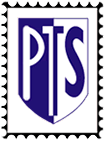Abbreviations
ACE STAMP AUCTIONS ABBREVIATIONS
| AAMC | Australian Air Mail Catalogue |
| ACSC | Australasian C'wealth Specialist Cat |
| ASC | Australasian Stamp Catalogue |
| BPA | British Philatelic Assoc Expertising Cert |
| b/s | Back stamped |
| Cat. | Catalogue |
| CDS | Circular Date Stamp |
| CTO | Cancelled to Order |
| Cert. | Certificate of Genuineness |
| Cond. | Condition |
| CPS | Counter Printed Stamp |
| Cat Val. | Catalogue Value |
| Dupl. | Duplicated |
| Eng | Engraved |
| Env | Envelope/Cover |
| Exc | Excellent |
| FDC | First Day Cover |
| FDI | First Day of Issue |
| F/U | Fine Used |
| FV | Face Value ($) |
| GU | Good Used (i.e. less than fine) |
| h/s | Hand stamp |
| Incl | Including |
| Inv | Inverted |
| Mc No. | McDonald PNC Catalogue |
| M/S | Miniature or souvenir sheet |
| MUH | Mint Unhinged |
| MLH | Mint Lightly Hinged |
| MNG | Mint No Gum |
| MVLH | Mint Very Lightly Hinged |
| O/C | Off Centre |
| O.G. | Original Gum |
| Ovpt | Overprinted |
| P&C | Pfeffer & Crum Booklet Catalogue |
| PD | Postage Due |
| Pmk | Postmark |
| PPC | Picture Postcard |
| PSE | Pre-stamped Envelope |
| PTSA | Priced To Sell At |
| Reg'd | Registered |
| S/A | Self Adhesive (also known as Peel & Stick) |
| SG | Stanley Gibbons Catalogue (£) |
| SS | Seven Seas Pictorial album |
| STC | Stated to catalogue |
| UNUSED | Mint without gum |
| U | Used |
| Var. | Variety or flaw |
| VF | Very Fine |
| VG | Very Good |
| W/C | Well centred |
| Wmk | Watermark |
COINS & BANKNOTES - Grading & terminology used in this catalogue
Proof: Proof coins are struck using specially hardened dies & highly polished blanks. The result is great clarity & depth of detail. Most modern proofs (1966 onwards) contrast a brilliant mirror background against delicately frosted detail.
Prooflike: Often a non-official mint strike, or medallic in nature.
Brilliant Uncirculated (B/Unc) or choice Unc: Uncirculated, but with higher than normal sheen.
Extremely Fine (EF): Coins shows only traces of wear to high points of the design & only light surface marks from circulating. Otherwise the design is clear and sharp & the coin will have much lustre. Notes are clean & crisp with only the slightest signs of creases and folds.
Very Fine (VF): Lustre has gone and there will be flatness on the design of a coin. Other traces of wear may also be evident. Banknotes of this grade will show distinct signs of handling though the paper will still be reasonably crisp.
Fine (F): The effects of handling will be quite evident from the amount of flatness to the design of a coin. Notes will have clear signs of soiling & heavy creasing, possibly also some tearing.
Very Good (VG): Most details of a coin's design will be all but gone, but the basic design and date are still visible. Notes of this grade are near the end of their useful life & are of little value unless they are rare.
Choice: An exceptional example of the given grade.
Good (g): Use of the prefix good (e.g. gVF) indicates that the item is slightly better than the grade stated.
About (a): Use of this prefix (e.g. aEF) indicates that the item is almost at the grading designated.
What is PCGS Encapsulation?
PCGS is an independent grading company based in the USA. They use a numbered scale to award grades to each coin they inspect from "1" for "worn flat" to "70" for "flawless". Coins in mint state are given the prefix "MS" and are then divided further still with the award of between 60 and 70 points out of a possible maximum of 70. Each coin is then sealed inside a tamper-proof holder with the details of the grade awarded. You will note we have several examples of these in this auction.
AIRMAILS & FLIGHT COVERS - Grading & terminology used in this catalogue
Good Condition - The cover is sound with no major faults or damage to the key parts such as the stamp, vignette or postmarks. However there may be light wear, corner creases, minor bends/folds, etc but nothing that detracts from the cover.VG Condition - Above average condition for a flight cover with none of the above minor faults.
Excellent Condition - Superb grade, fault free and well above expected condition.
Heavy foxing/toning, folds, tears and tape remains/repairs have all been described accordingly however remember we are dealing with historic, aged covers that have been handled outside of the clinical condition of the today's mail centres so there must be understanding of this when bidding.
Please Note; The date shown at the front of each description is the date that appears in the AAMC and was the earliest date that the flight or later intermediates or return routes began. This is done for ease of use with the catalogue and thus we have done the same to ensure the AAMC can be used in conjunction with this auction catalogue. Hence the actual "flown" date may not be the one at the start of the description but should appear within the text





